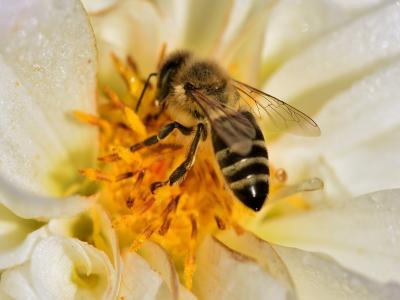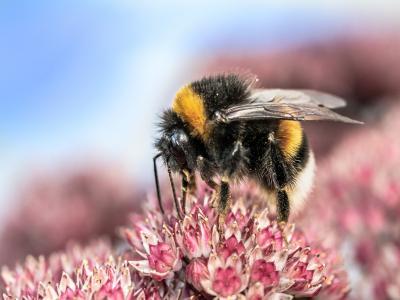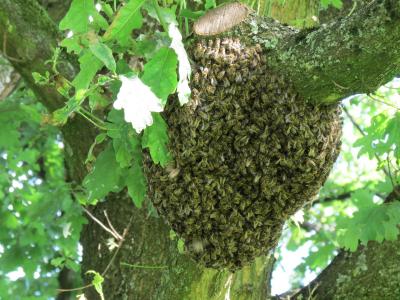Bees
Bees
Getting rid of bees
We no longer treat bees as there has been a rapid decline in bee population.
If you need help with a nest or swarm, visit the Beekeepers Association website www.bbka.org.uk. Please note they can only help with honey bees, not bumble bees or masonry bees.
What do bees look like?
There are many types of bee which come in different shapes and sizes. Common ones that you will see are honey bees. They have black stripes alternating with bands of amber, and they have brown fuzzy hairs.

Masonry bees are similar but even darker in colour. Bumble bees are larger and fluffier.

People often confuse bees with wasps. Wasps are not hairy and have brighter yellow stripes. Bees die after one sting, but wasps can sting repeatedly. We can carry out pest control treatment for wasps.
Bee Strategy
Newcastle City Council created the Bee Strategy to promote the importance of bees. There are over 200 species of bees in the UK, but bee populations have been declining in the last few years due to various factors including loss of habitat, disease and use of pesticides. This is why we no longer carry out pest control treatment for bees.
Bees need your help; many of their nesting sites and their wildflower food supplies have been destroyed by modern farming practices and urban development. As a result about a quarter of our bees are now endangered species. Moreover the use of herbicides has reduced the nectar and pollen supply, while pesticides have affected the bee population directly. Summer in the garden just wouldn’t be the same without the gentle hum of bees on a warm sunny day.
The aims and objectives of Newcastle’s Bee Strategy are:
- to raise awareness amongst the community and to show the benefits of bees.
- to adapt the local environment to provide the right conditions for all kinds of bees to increase.
Why do we need bees?
The pollination of crops by honeybees is worth an estimated £200 million each year to the British economy. In order for plants to produce fruit and seeds their flowers must be pollinated. Bees are responsible for the pollination of more than 40 important food crops grown in this country.
Apples, pears, cherries, raspberries, blackcurrants, beans, tomatoes, pumpkins and blackberries are just some of the fruits that are pollinated by bees. We eat the roots and leaves of plants like turnips, cabbage, beetroot, carrots and celery but without pollination we would have no seeds to grow new plants. Oilseed rape and sunflowers produce seeds to be crushed to make cooking oils.
Farm animals also feed on plants pollinated by bees, such as clover and swede. It is estimated that 1/3 of the food that we eat relies on bees for pollination.
Did you know?
If you are a YHN tenant and have a swarm inside your home or have a swarm preventing a repair (for example resting on a fence or in a roof cavity) please phone 0191 2787878 and ask for "Pest Control."
Please note a swarm is thousands of bees, normally in a clump around a queen bee.

Related Pages
If you would like to give us feedback on our website, please complete this short online form.